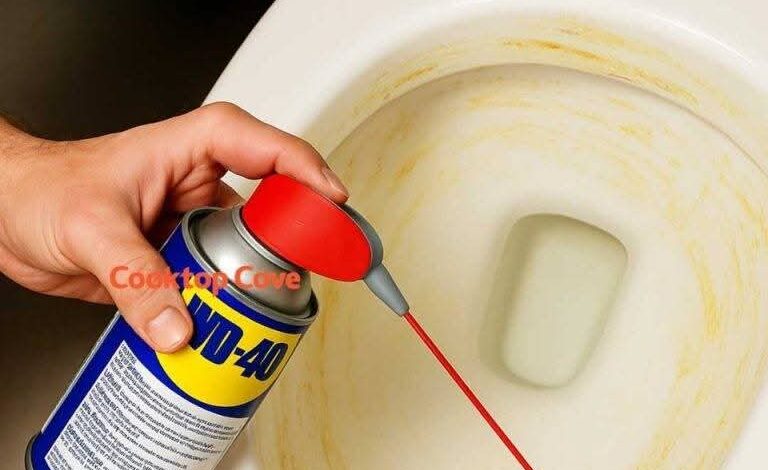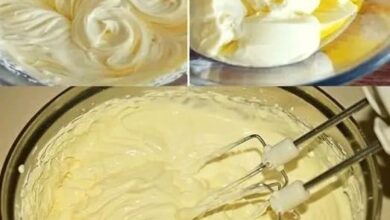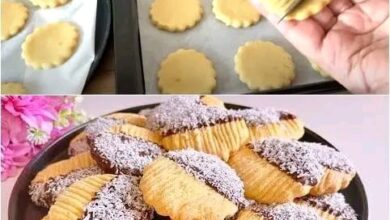Origin and Cultural Significance

Absolutely! Here’s a fun and informative breakdown of WD-40’s unexpected role in the kitchen — yes, you read that right! While it’s not edible, WD-40 can be surprisingly helpful in keeping your kitchen tools and appliances in top shape. Let’s dive into this unconventional kitchen companion. 🔧🍽️
—
🧴 Introduction
Ever thought of WD-40 as your secret weapon in the kitchen? While most of us associate it with garage tools or squeaky doors, WD-40 has a surprising number of uses in the kitchen — and none of them involve cooking! From loosening stuck parts to preventing rust and removing sticky residue, it’s more versatile than you think.
—
🛠️
WD-40 was invented in 1953 by a group of chemists at the Rocket Chemical Company in San Diego. The name stands for “Water Displacement, 40th formula” — the successful version that became the household staple we know today.
Originally used to protect aerospace equipment from rust and corrosion, it quickly became a popular multi-use product in homes worldwide. While not food-safe and certainly not a cooking ingredient, it’s been trusted for decades for maintenance and cleaning, including in the kitchen.
—
📦 Ingredients & Quantity (Not for consumption!)
WD-40 is a proprietary formula that includes:
A blend of lubricants
Anti-corrosion agents
Water-displacing compounds
📌 Important: WD-40 is not food-safe and should never be applied directly to surfaces that touch food unless wiped clean thoroughly.
—
➕ Optional Additions (Alternative Uses in the Kitchen)
Here are some alternative tools and solutions you can use alongside or instead of WD-40 in the kitchen:
Baking soda + oil for removing sticky residue (food-safe)
White vinegar for natural rust removal
Food-safe lubricants for kitchen appliances (like silicone spray)
But if you’re using WD-40, here’s what it can do…
—
💡 Tips for Success
1. Use sparingly: A small spray goes a long way.
2. Avoid direct food contact: Only use WD-40 on non-food-touching parts (like hinges or exteriors).
3. Wipe thoroughly: Always clean surfaces after spraying.
4. Ventilate the area when using — the fumes can be strong.
5. Use the straw nozzle for precision in tight spaces (e.g., cabinet hinges or blender bases).
—
🛠️ Instructions: How to Use WD-40 in the Kitchen
Here are some smart and safe ways to use WD-40 in your kitchen:
1. Loosen a stuck blender base or lid
Spray a tiny amount around the stuck area (away from internal parts), let sit for a minute, then twist gently.
2. Remove sticky residue from jars or appliances
Spray onto a cloth, then wipe the sticky area. Let sit for a few seconds and scrub gently. Clean afterward with warm, soapy water.
3. Prevent rust on metal kitchen tools
Use a light coat on items like old can openers, food processor blades (only non-contact surfaces), or mixing attachments. Wipe off thoroughly before storing.
4. Fix squeaky cabinet doors or drawers
Apply directly to hinges, then open and close to distribute. Clean up any drips.
—
✨ Description
In the kitchen, WD-40 acts as a non-cooking utility hero — handling minor frustrations like squeaky hinges, stuck appliance parts, or rusty gadgets. It’s not glamorous, but it’s incredibly effective. Think of it as your behind-the-scenes helper for keeping everything running smoothly.
—
⚖️ Nutritional Information
🚫 Zero calories, zero nutrients, zero food value.
Remember: WD-40 is not food-safe and should never be ingested or used on surfaces that touch food unless properly cleaned afterward.
—
📝 Conclusion
WD-40 in the kitchen? It might not be part of your spice rack, but it absolutely belongs in your utility drawer. From maintaining small appliances to solving everyday annoyances, it’s a multi-use marvel — just use it wisely and safely.
—
👍 Recommendation
Keep a can of WD-40 handy for:
Quick maintenance fixes
Appliance upkeep
Removing grime or sticky labels
Emergency squeaks and jams
But remember to always clean thoroughly and keep it far from anything edible.
—
💚 Embracing Healthful Indulgence (and Clean Kitchens)
While WD-40 isn’t part of a health routine, a clean, well-maintained kitchen absolutely supports a healthier lifestyle. Working appliances, non-sticking tools, and rust-free gadgets make food prep smoother, safer, and more enjoyable. When your space runs well, healthy habits follow.
—
💬 Ever thought of WD-40 as your secret weapon in the kitchen? 🍽️
You won’t believe what it can do beyond squeaky hinges!
Find all the surprising tips in the FIRST COMMENT below! 👇✨
Would you like a printable checklist of kitchen-friendly WD-40 uses?



